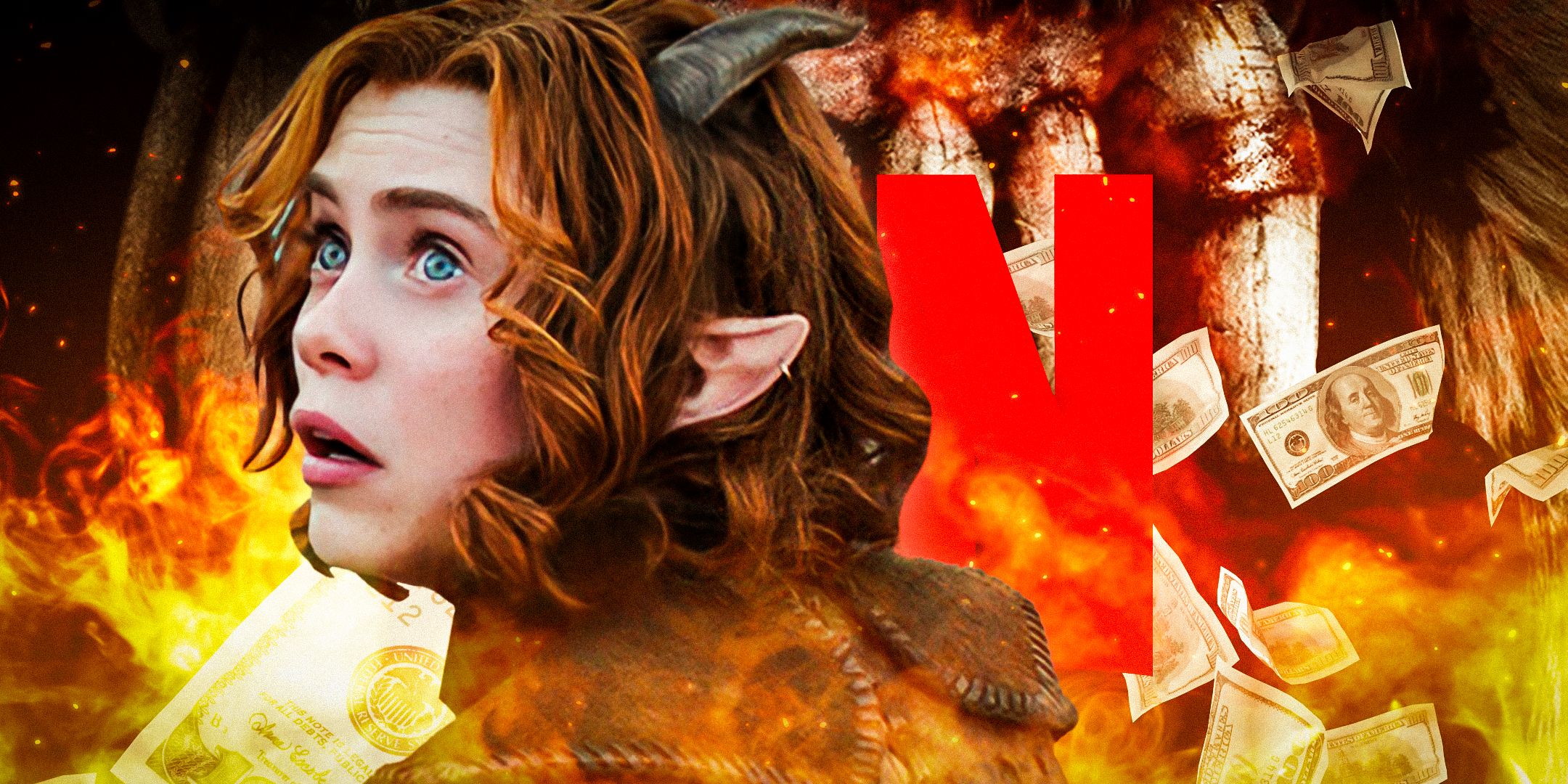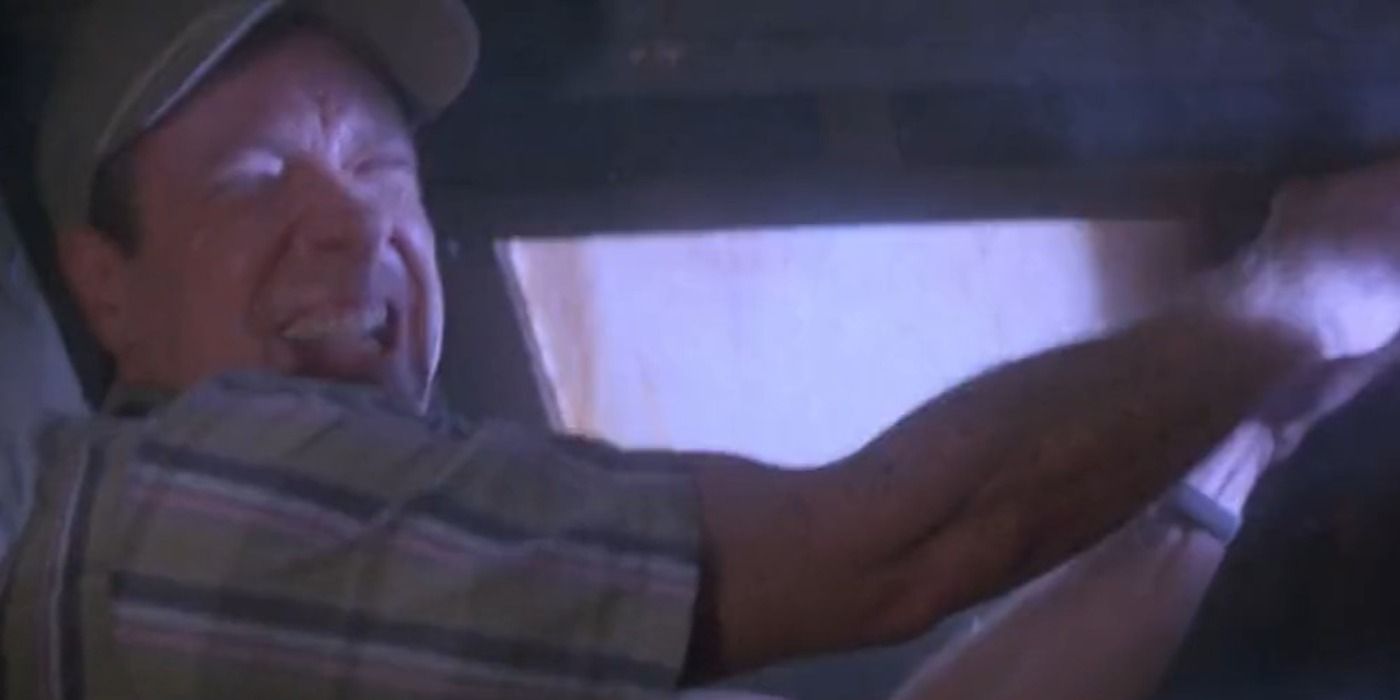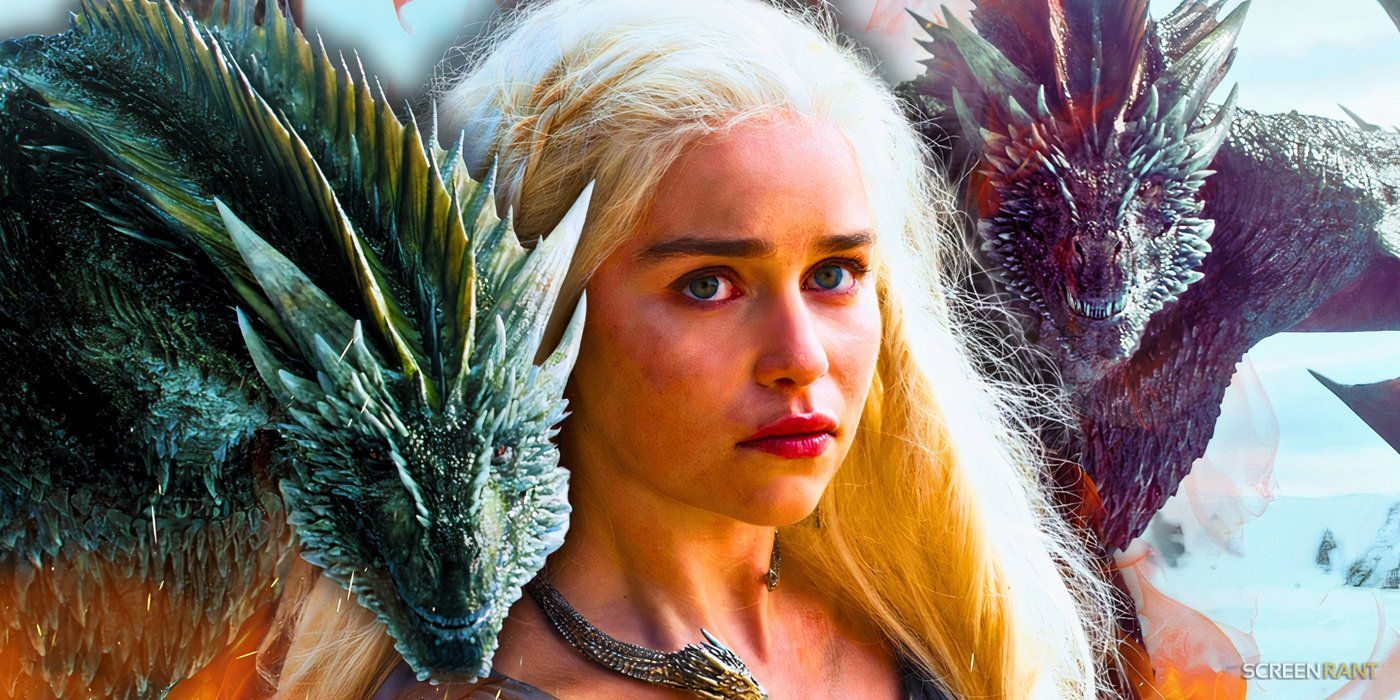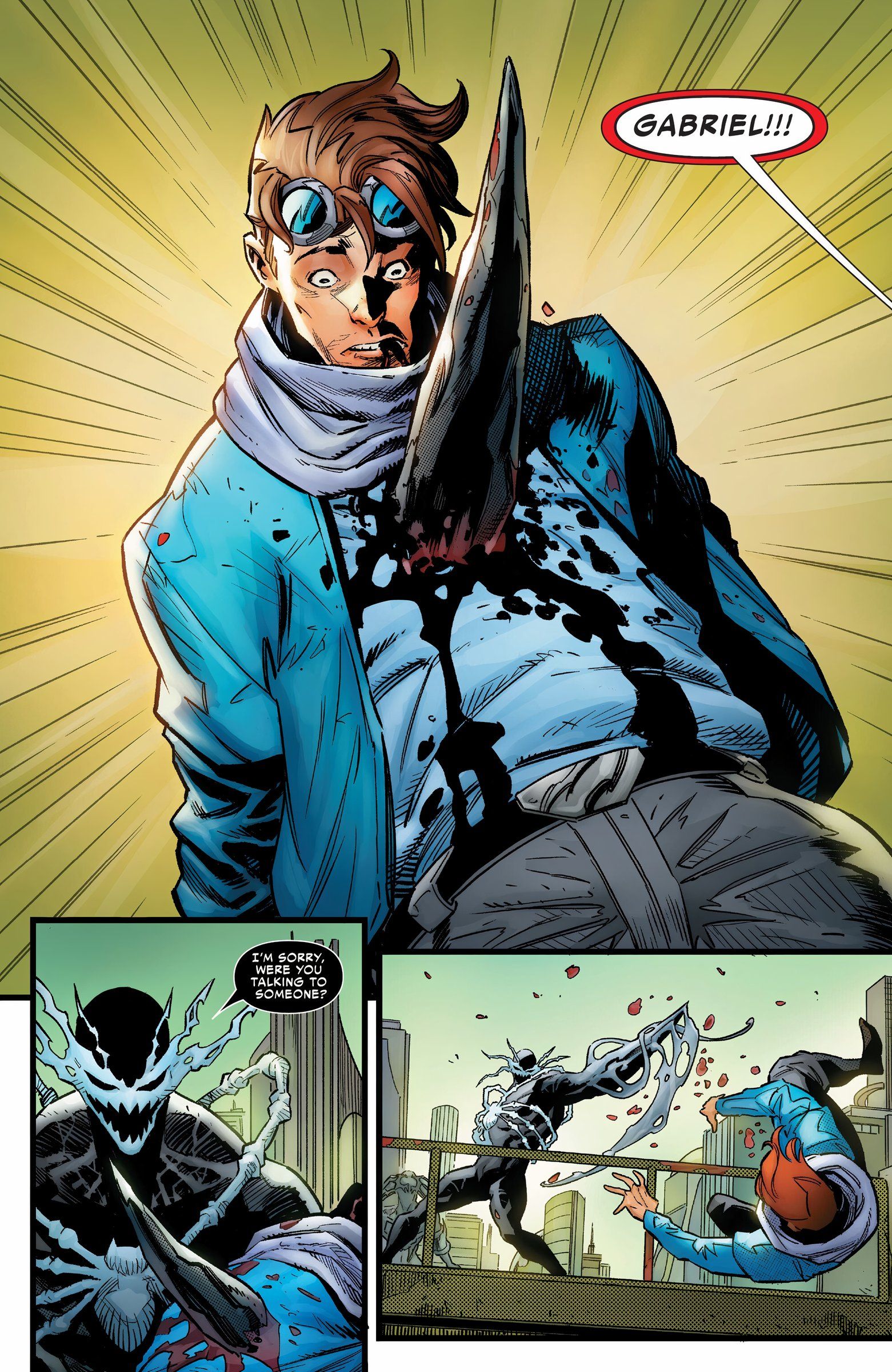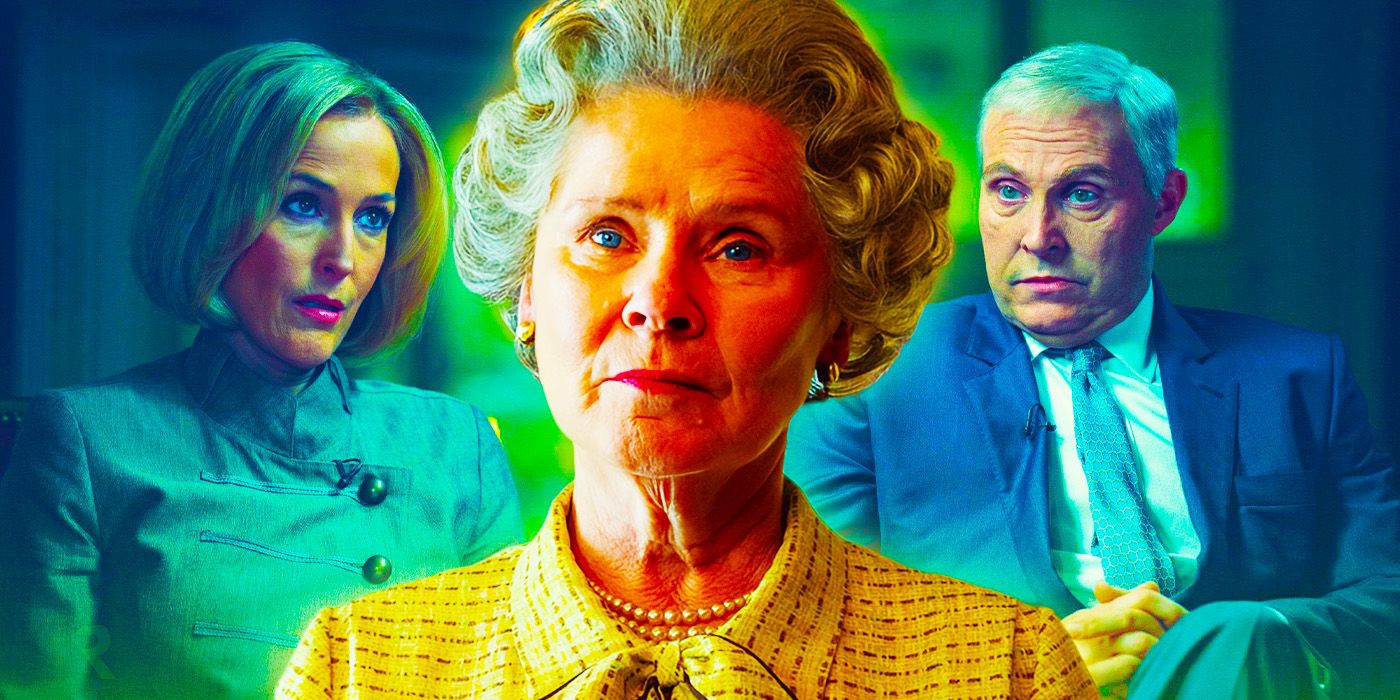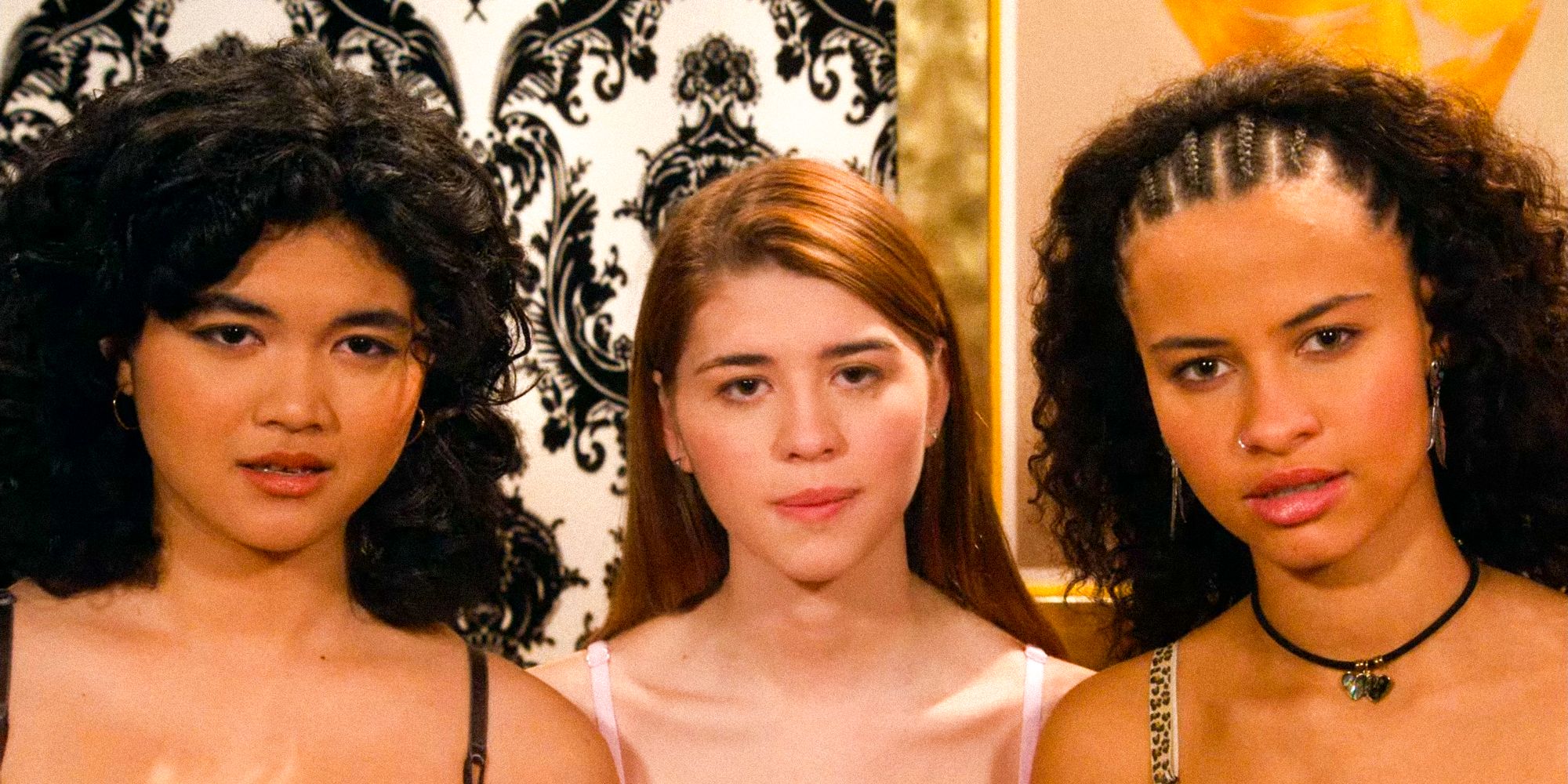George Lucas and the other creators of the original trilogy of Star Wars imagined some of the most original concepts in all science fiction, but not all of them made it to the screen, and 15 of their early designs could have completely changed the entire franchise. The original trilogy featured some of the most important alien races in Star Wars, and all of them showed off the incredible imaginations of their creators. While George Lucas made up some Star Wars elements on the spot, many of the series’ aspects were carefully planned and went through multiple versions before they were ready for the screen.
While Lucas was the mastermind behind the original trilogy, he couldn’t bring the galaxy far, far away to life without a significant amount of help. Some of the people who helped him the most were production illustrator Ralph McQuarrie, costume designer John Mollo, and visual effects art director Joe Johnston, among many others. They were responsible for most of the concept art that never made it to the screen in the original trilogy of Star Wars movies, and these are the 15 pieces of their art that would have completely changed Star Wars had they become the final designs.

Related
Star Wars Original Trilogy Cast & Character Guide
From Mark Hamill to Carrie Fisher to Harrison Ford, the original Star Wars trilogy launched its cast members to stardom with iconic characters.
15
C3-PO’s Original Art-Deco Design
Ralph McQuarrie’s original design for the iconic droids R2-D2 and C3-PO were some of the first drawings he did for A New Hope. His idea of C3-PO especially stands out, as it was clearly inspired by the art deco movement and gave the droid a much wider range of motion. His aesthetic design elements would have made Threepio look like a much more refined and elegant droid, in stark contrast to the stuck-up and cowardly personality audiences have come to love. His thinner, more humanoid joints also would have given him more mobility and taken away his classic shuffling walk.
Important people in Star Wars’ creation | Role |
|---|---|
Ralph McQuarrie | Production Illustrator |
John Mollo | Costume Designer |
Joe Johnston | Visual Effects Art Director |
Colin Cantwell | Ship Concept Artist |
Nilo Rodis-Jamero | Assistant Art Director of Visual Effects |
14
Jawas And Tuskens Almost Had Faces
They’re some of the most mysterious species in Star Wars because of the change
Jawas and Tuskens were created to add intrigue to Tatooine in A New Hope, but John Mollo’s original design left less to the imagination. His original sketches of the costumes for Jawas and Tuskens didn’t completely cover their faces, instead letting their alien profiles be seen in plain view. Debate has raged for decades since the movie’s debut about what Jawas look like under their hoods, and Mollo’s original design would have settled that debate before it started. Their mystery added to the charm of the original trilogy, and an innocuous decision to hide their faces has become one of the most enduring parts of the franchise.
13
Chewbacca Was Originally A Lasat
His first design was later used for Zeb in Star Wars Rebels
Dave Filoni has a penchant for canonizing scrapped concept art in his own projects, and he famously used one of McQuarrie’s sketches for Chewbacca to create the Lasat Zeb Orrelios. Chewbacca’s original design depicted him as a slightly hairy, fully clothed creature that looked like a vampire. It was probably for the best that Chewbacca went through his changes, as his final design made him look more lovable, which almost certainly contributed to his popularity. Chewbacca has been one of the most important characters in every era of Star Wars, and it’s interesting to see how important even his unused designs were to the franchise.
Chewbacca
200 years old by the time of the Star Wars original trilogy, the mighty Chewbacca is best known for swearing a life debt to Han Solo. Chewie accompanied Han through countless adventures, choosing to battle against the Empire for the freedom of his homeworld Kashyyyk. He remained with Han and the Solo family even after the Empire’s fall, becoming a crucial ally of the Resistance to the First Order. The sequels seemed to end with Chewie remaining co-pilot of the Millennium Falcon – but now to Rey.
- Created By
-
George Lucas
- Cast
-
Peter Mayhew
, Joonas Suotamo - First Appearance
-
Star Wars: Episode IV – A New Hope
- Race
-
Wookiee
12
Stormtroopers Could Have Carried Lightsabers
The weapons were instead reserved for Jedi and Sith
Lightsabers are the most iconic weapon in all of Star Wars, but they were almost commonplace enough for the Empire to equip stormtroopers with them. One of McQuarrie’s original designs for stormtroopers showed them carrying lightsabers and shields while chasing after the Rebels. The decision to save lightsabers for Jedi and Sith exclusively may have been a practical one, as the original lightsabers required battery packs, but it turned out for the best. By making them more exclusive, lightsabers became some of the most instantly recognizable symbols of Star Wars and made countless viewers wish they had one for themselves.
11
The X-Wing Used To Be Sleek & Light
They were modeled to be drag racers with thinner wings
Starships were an integral part of the original trilogy, and X-Wings were the vehicle of choice for the Rebel Alliance. An original model of the X-Wing was created by Colin Cantwell, the concept artist behind many of the original trilogy’s ships, and it featured thinner wings set at sharp angles from the body of the ship. It was a very different aesthetic from the final design, which had thicker wings at more gradual angles, and generally looked heavier. The original X-Wing design would have emphasized their speed, which could have changed space battles forever.
10
Tauntauns Were Once Ostriches
Hoth would have also been a much greener planet if the original design survived
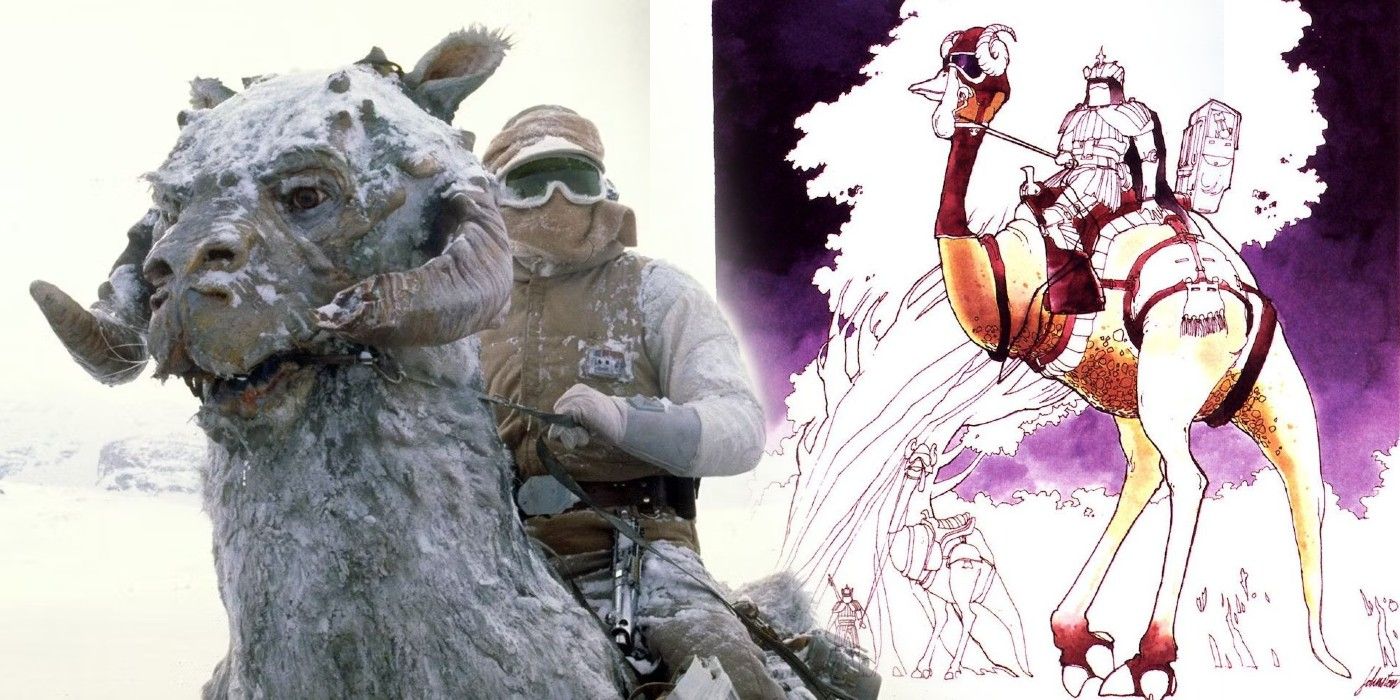
The opening of The Empire Strikes Back on the frigid planet Hoth is one of the most iconic scenes in Star Wars, but the entire planet, and its famous mounts, were almost different. Johnston’s original design for tauntauns made them more similar to ostriches, a choice that would have worked given Hoth was supposed to have trees and vegetation. Johnston’s design would have made the opening scene much less fantastically alien, and the iconic moment where Han Solo cut open a tauntaun to save Luke Skywalker might not have happened if audiences saw the similarities to a real-life animal.
9
The AT-ST Was Unrecognizable
It originally had big windows and a roomy cabin
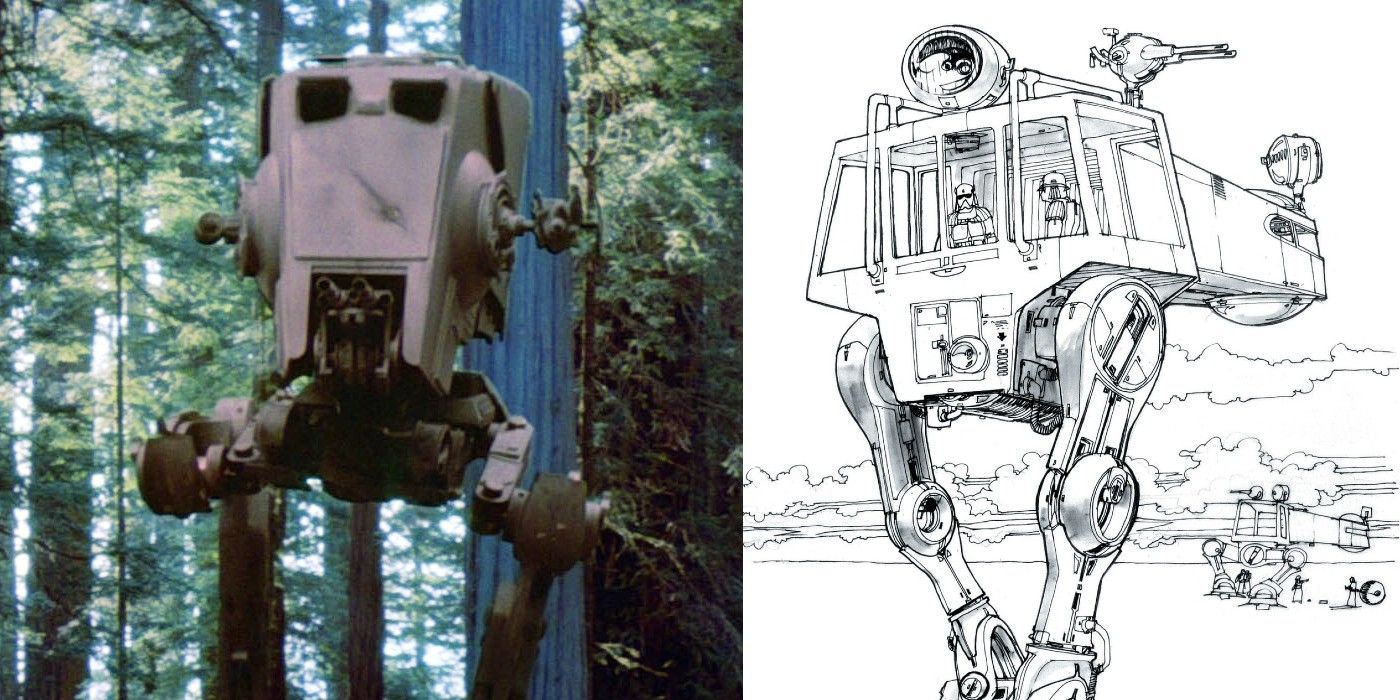
The AT-ST is one of the most original vehicles in the franchise, even if the practicality of their two thin legs sometimes came into question. Johnston’s design for the AT-ST almost put massive windows on the front of the vehicle, which would have made it even easier to take them down. While windows in Star Wars are made of transparisteel instead of glass, it’s still not the strongest material in the galaxy. The original design’s windows would have been begging for Rebels to take out its pilots, which would have made some key battles much less climactic.
8
Yoda Was Originally A Gnome
Yoda could’ve looked much more like a mystical woodland creature
Yoda was one of the most unique aliens in the entire original trilogy due to his small stature and green, wrinkly skin, which lent itself to his role as a mysterious and wise teacher. Both Johnston and McQuarrie originally leaned further into Yoda’s mystical nature, and he ended up looking like a gnome or goblin from fantasy stories. Changing his design helped differentiate Yoda from a fantasy creature, though, and it worked better in the larger science fiction context of Star Wars.
Yoda
The aged Jedi Master had trained Jedi for 800 years by the time he met Luke Skywalker on the planet Dagobah. One of the most famed and revered Jedi, Yoda served as Grand Master of the Jedi Order for centuries; he was powerful enough to duel Darth Sidious himself, although he was defeated. Yoda exiled himself to Dagobah, where he learned how to become a Force Ghost and offered guidance to Luke Skywalker.
- Created By
-
George Lucas
- Cast
-
Frank Oz
, Tom Kane - First Appearance
-
Star Wars: Episode V – The Empire Strikes Back
- Race
-
Unknown
7
Palpatine Nearly Changed Appearance Based On His Mood
Lucas didn’t have a definite idea for Palpatine yet in The Empire Strikes Back
One of the biggest challenges with creating the Emperor was finding a way to convey how evil he was with the resources available in 1979. McQuarrie’s original designs included some ideas on how to accomplish that, and he suggested that Palpatine’s appearance should change based on his mood throughout his holoprojector call with Darth Vader. Lucas denied the idea, and instead went with a combination of two actors and a monkey to depict Emperor Palpatine’s deformed visage. McQuarrie’s idea would have made Palpatine into a much more obviously evil force, which would have made his subtle political plays in the prequel trilogy impossible.
Emperor Palpatine/Darth Sidious
The senator for Naboo, Palpatine rose to power and influence during the dying days of the Republic. In reality, his public persona was just a mask; he was really Darth Sidious, greatest of the Sith Lords, and he used his political skills and Machiavellian cunning to bring down both the Republic and the Jedi. Palpatine ruled his Galactic Empire for decades, until he was betrayed by his apprentice, Darth Vader. Even this wasn’t enough to stop the Emperor, however, as he was resurrected by his followers – only to be defeated once again.
- Created By
-
George Lucas
- Cast
-
Ian McDiarmid
, Sam Witwer
, ian abercrombie - First Appearance
-
Star Wars: Episode V – The Empire Strikes Back
- Alliance
-
Sith, Empire
6
Ewoks Almost Rode Manta Rays On Bespin
Luke was supposed to befriend a tribe of aliens to take him to Cloud City
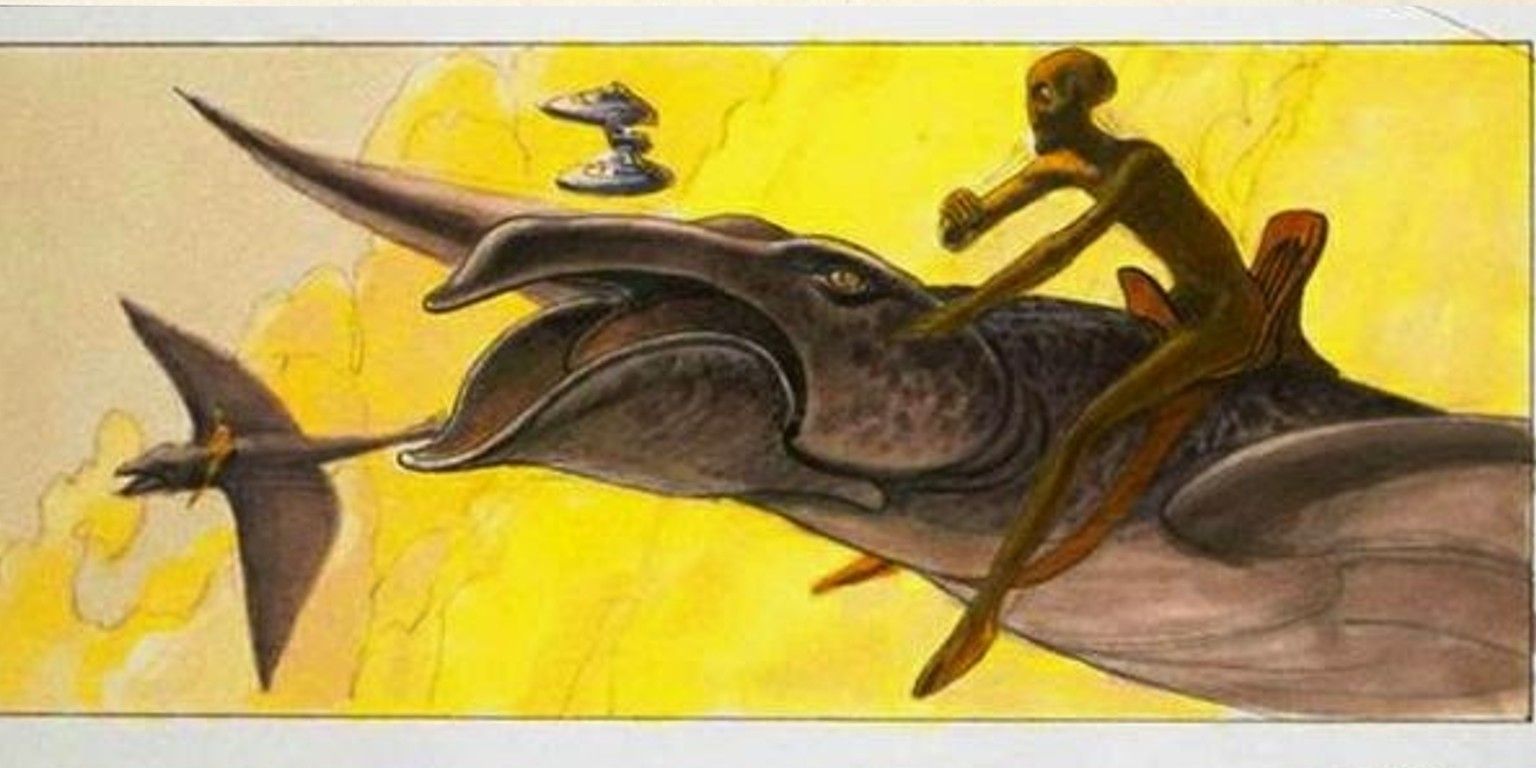
One of the biggest changes in the franchise was made to the original concept for Ewoks. They wouldn’t be known as Ewoks until Return of the Jedi, but McQuarrie imagined an alien race that rode flying animals that resembled manta rays through the clouds of Bespin. Luke would have had to befriend a tribe of them to reach Cloud City and save his friends, but the idea was scrapped. That was probably a good decision, as one of The Empire Strikes Back‘s biggest advantages is how quickly its plot moves, while including Ewoks would have sidetracked the story.
5
Jabba The Hutt Was Almost Even More Disgusting
Jabba was always meant to be repulsive, but he could’ve looked even worse
Jabba the Hutt was one of the most infamous crime lords in the galaxy, and his species was well known for their unsightly appearance. Lucas wanted Jabba to look like a slob, and McQuarrie more than delivered on that request with his original concept art, which turned his repulsiveness up to 11. Some of McQuarrie’s designs bordered on body horror, which would have turned Jabba from an easy to hate villain into a legitimately scary monster. The early drawings’ sharp teeth and pig nose would have made it harder for young viewers to enjoy Return of the Jedi, and it could have made Jabba a one-off villain.
4
The Rebels Almost Had A Base On Lothal
There was a scrapped idea for a planet named Sicemon
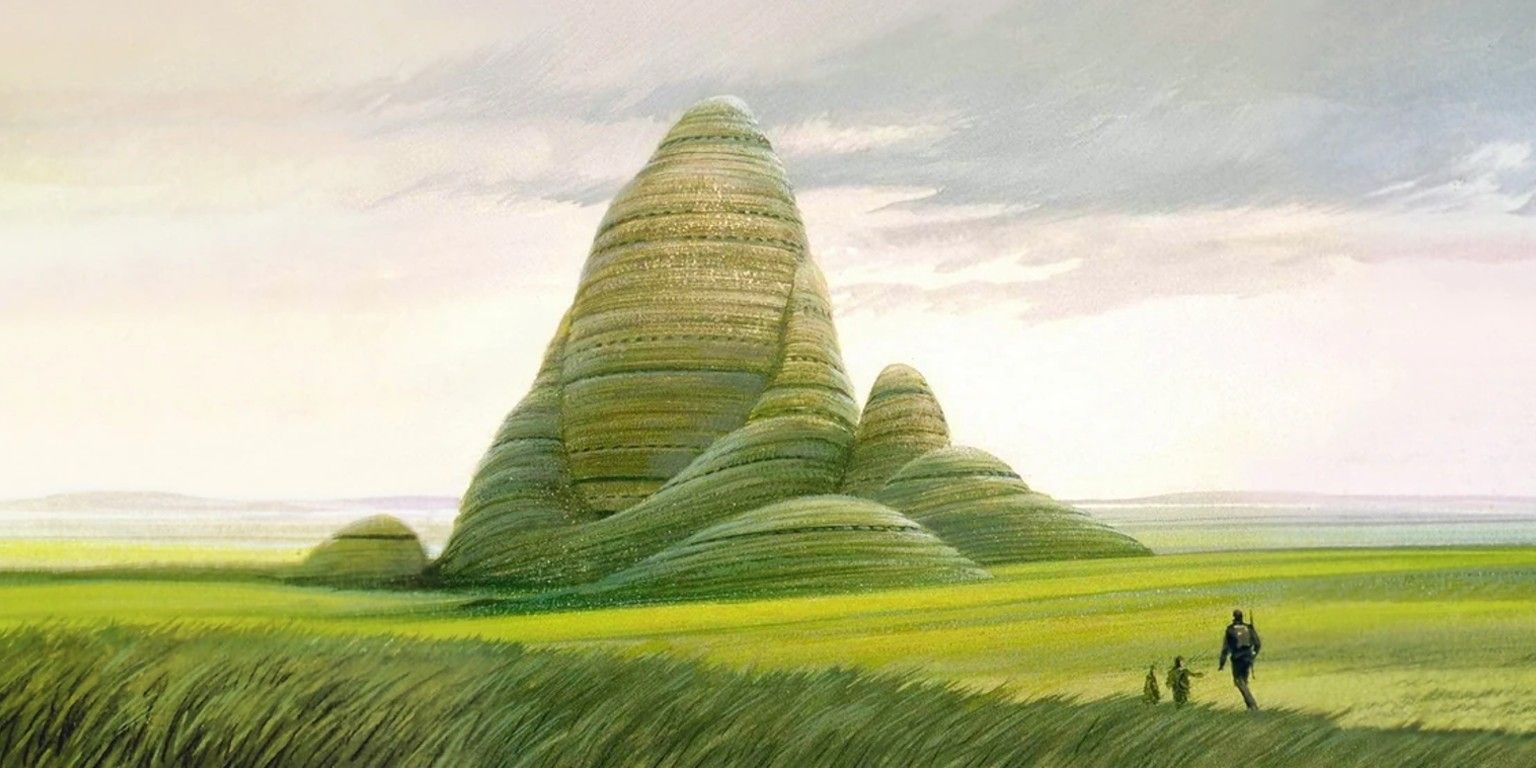
One of the other most famous concepts Dave Filoni used in Star Wars Rebels was the planet Sicemon, which he used for Lothal. McQuarrie’s concept of Sicemon featured massive grassy mounds in the middle of a vast plain, and it also housed a Rebel base. While many of the other pieces of concept art for the original trilogy were simply transformed into different designs, Sicemon was scrapped entirely until decades later. There’s no telling what effect a new planet could have had on the original trilogy, and it’s one of the biggest missed opportunities in Star Wars.
3
The Endor Speeders Were Once Low-rider Motorcycles
Speeder bikes used to have bright paint jobs
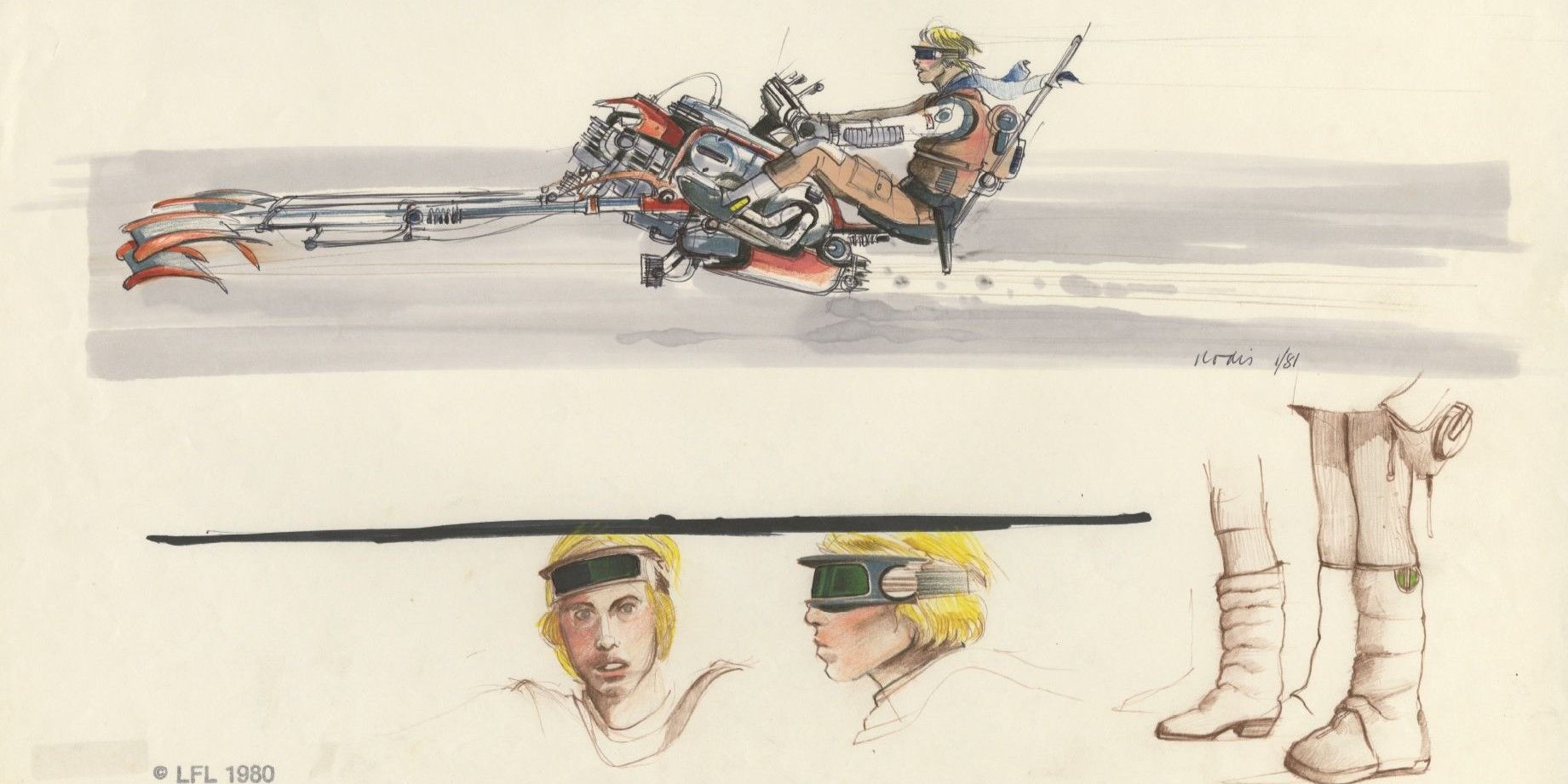
The speeder bikes Luke and Leia used to chase down stormtrooper scouts went through several redesigns before a final version was created. One of the earliest versions, designed by Nilo Rodis-Jamero, was inspired by low-rider motorcycles and featured bright red paint. This design would have provided an interesting connection from Luke and Leia to their father, Anakin, as the Rodis-Jamero’s speeder was reminiscent of the pod racers from The Phantom Menace. While they might not have fit in with the Imperial aesthetic, seeing the original trilogy’s heroes ride the Star Wars equivalent of hot rods would have been a cool moment.
2
Ewoks Were Almost Tall – And Rode Yuzzums
Ewoks went through several redesigns before Return of the Jedi
Ewoks have undergone some of the most design changes of any species in the original trilogy, and the on-screen version looked wildly different from their first iteration. McQuarrie’s early sketches gave Ewoks extremely long, spindly legs and had them riding similarly tall creatures known as Yuzzums. That would have completely gone against the purpose of the Ewoks, who were designed to look cute and appeal to children. That could have made the Battle of Endor even more divisive than it currently is, so rethinking the designs was ultimately a good call.
1
The Emperor’s Throne Room Was Originally A Lake Of Lava
An early version of Return of the Jedi’s script used this concept
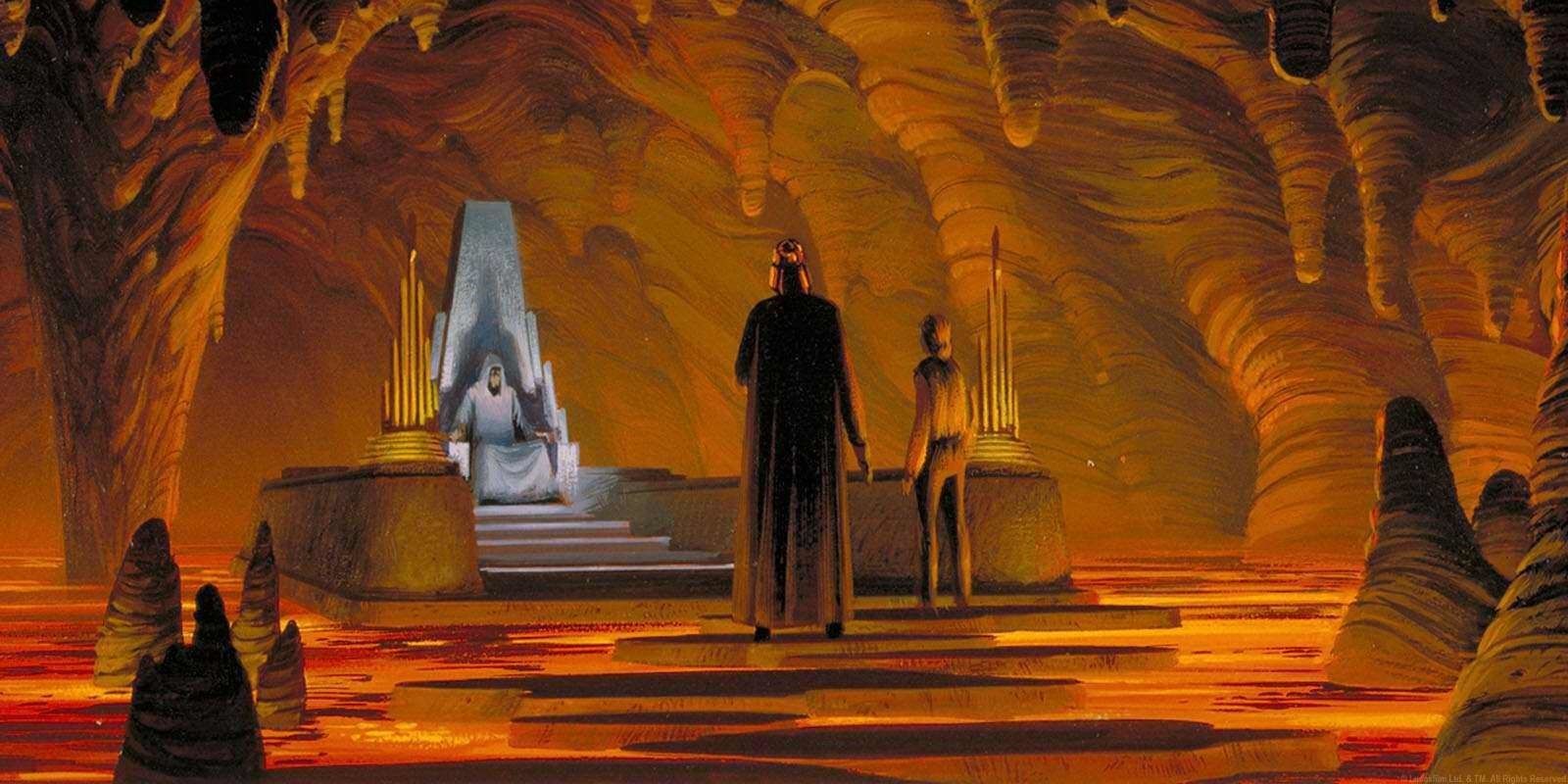
As with most of the original trilogy, Return of the Jedi went through multiple major changes to its script, and one of the most affected aspects was Palpatine’s throne room. McQuarrie’s concept art for the throne room originally placed the Emperor in a cavern filled with lava, as opposed to his room on the new Death Star. This played into a major part of an older version of the script, where Obi-Wan and Yoda’s Force ghosts helped Luke fight the dark side powers. It also could have been a unique connection to the prequel trilogy and Anakin and Obi-Wan’s first duel on Mustafar.
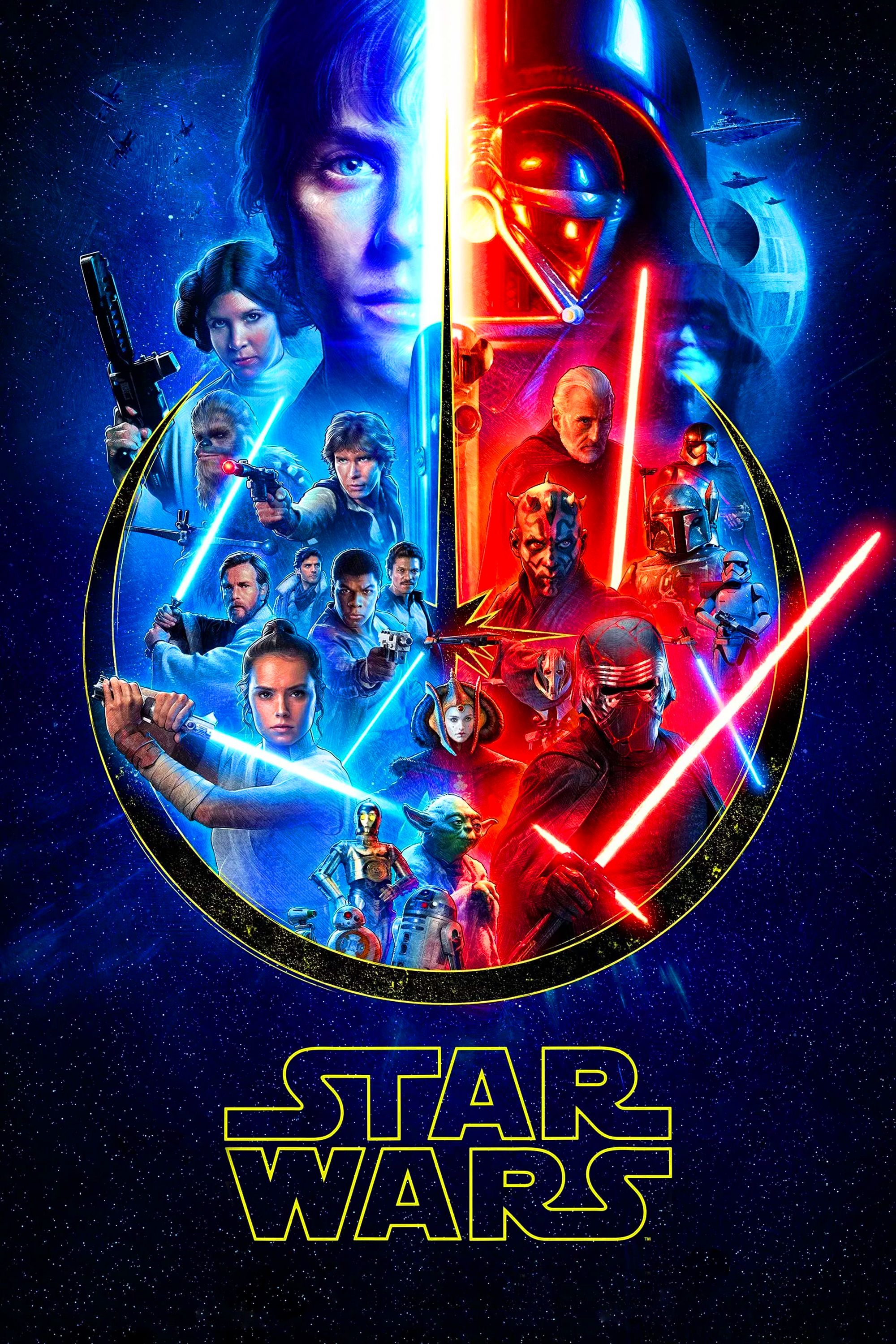
Star Wars
- Created by
-
George Lucas
- First Film
-
Star Wars: Episode IV – A New Hope
